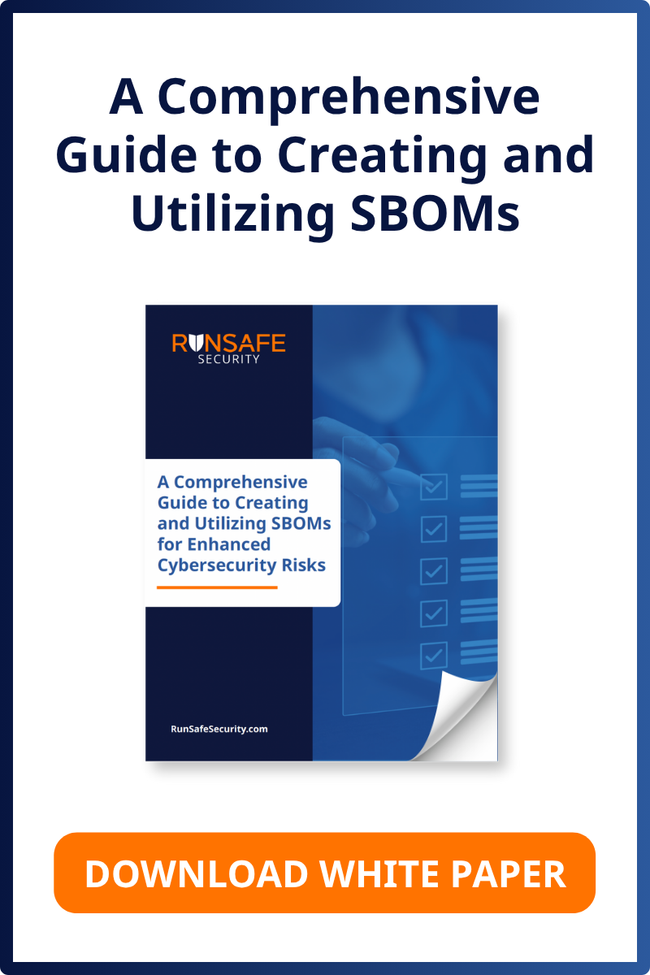Key Takeaways:
- AI will transform aerospace cybersecurity, helping find vulnerabilities faster but also creating new ones
- Collaboration among government, primes, and vendors is needed to protect connected systems
- Disposable and low-cost UAVs still require strong security to ensure mission success
- Cyber resilience and modular architectures will define the next decade of secure aerospace operations
The aerospace and defense sector is entering a new chapter. With networked systems, distributed architectures, and mission-critical connectivity, cybersecurity is as vital as physical shielding.
In a recent discussion on aerospace cybersecurity strategy, Shane Fry, CTO of RunSafe Security, and Patrick Miller, Product Manager at Lynx, discussed how the next five to ten years will reshape how we defend aerospace assets.
What follows are four key trends that highlight where the industry is headed.
Watch the full webinar for more on aerospace cybersecurity here.
1. AI’s Dual-Edged Role in Cyber and Operations
Artificial intelligence is emerging as both a revolutionary tool and a potential liability in aerospace cybersecurity. Shane noted how AI is reshaping nearly every aspect of defense systems, from vulnerability detection to operational optimization.
“There’s a lot of really cool research being done in penetration testing and finding vulnerabilities and using AI to assist operators in security,” he said.
AI is now helping engineers and analysts identify weaknesses faster and automate portions of cyber defense previously handled manually. But as Shane pointed out, the same technology that accelerates innovation can also magnify risks.
“One of the things that is a negative,” he warned, “is many of these new capabilities are trained on software that’s not secure.”
Large language models and AI code-generation tools often learn from open-source repositories riddled with known flaws. That means they might produce software that appears sound but hides vulnerabilities—like memory corruption or buffer overflows—deep within the codebase.
“We’re going to see a rise in software vulnerabilities,” Shane predicted, “as more developers use these code-assistants to produce faster code that looks good but may actually have subtle memory corruption vulnerabilities in them.”
For a sector where software directly underpins mission safety and national defense, that’s a sobering reality. The next phase of AI integration, Shane cautioned, may bring turbulence before it delivers real progress.
“The next six months to a year or two years might be really rough,” he admitted, “but ultimately, the progress will be for the overall good.”
2. Disposable Weapons & UAVs: Security at Speed and Scale
One of the most striking shifts Shane highlighted was the rise of low-cost, “disposable” weapon systems, particularly unmanned aerial vehicles (UAVs). In a time where speed and affordability are driving procurement decisions, these assets are designed to complete their mission, but not necessarily to return.
“When we talk about disposable UAVs,” Shane explained, “there’s a lot of interest in having lower-cost solutions that we don’t care if they survive the mission. We just need them to accomplish the mission.”
That philosophy is reshaping how system owners think about design and risk. Yet, Shane cautioned that the push for cheaper, faster production can come at a dangerous price.
“As we strive to cut as much as we can to bring costs down,” he said, “we’ve got to make sure that we’re still doing enough security, enough safety so that we can accomplish the mission.”
In a world where digital compromise can have physical consequences, even a minor software flaw could be catastrophic. “We don’t want to end up in a situation where a UAV flying overhead has a trivial vulnerability that gets exploited, and the drone turns around and bombs an allied target,” Shane said.
That vivid example underscores a growing tension in modern defense programs: how to balance affordability and agility with assurance and control. The Department of Defense’s efforts to modernize its software approval and certification processes for future readiness will be critical.
A core component of that, Shane noted, is “having good, accurate SBOMs and being able to understand what the risk is in your software that you’re shipping.”
Additionally, this will help ensure that even low-cost or disposable systems can be deployed responsibly.
In short, the aerospace industry is entering an era where scale and security must coexist. Disposable systems may not be built to last, but their cybersecurity must endure long enough to protect the mission, the data, and the allies they serve.
3. Ecosystem Collaboration: Government, Primes & Vendors
Cyber defense of aerospace is not a solo endeavor. Governments, aerospace primes, and vendors will need to align to defend complex systems.
Shane observed that modern systems integrate legacy code, which is becoming increasingly interconnected, heightening risk. To manage this complexity, the industry is leaning into partnerships and certified deployment paths.
For example, Lynx’s secure hypervisor technology, when paired with RunSafe’s memory protection, delivers a layered, modular architecture that strengthens system isolation and resilience in the field.
When discussing future integration of AI, Patrick noted: “Lynx has taken the approach of enabling those safety-focused or non-critical applications to run alongside, but totally separate from, the safety-critical applications and subjects within that same hardware.”
This collaborative, layered approach is one example of working together to reduce overall risk.
4. Cyber Resilience: The Imperative for Operational Continuity
Overarching all of these trends is the principle of resilience. In an environment where AI may introduce new vulnerabilities, collaboration expands the ecosystem, geopolitics raises the stakes, and disposable systems proliferate, aerospace defenders must build platforms that can endure, adapt, and recover.
As Shane explained: “You’re going to get the most out of your hardware and your systems by having a more robust and modular system, with security baked in.”
He continued: “Having a modular system lets you get new software, new features, new capabilities onto your platforms faster.”
Patrick noted that the partnership model between Lynx and RunSafe demonstrates what “defense-in-depth” looks like in practice.
“With the Lynx and RunSafe partnership,” Patrick said, “pairing that with RunSafe’s memory protection, you’re able to remove a whole category of exploits you’d otherwise have to defend against.”
The Decade Ahead
The next decade for aerospace cybersecurity will be defined by convergence between AI and assurance, collaboration and software supply chain transparency, pre-emptive design and agile operations.
Building resilience and adopting safety-focused engineering will enable faster innovation without leaving cybersecurity by the wayside.
For more on RunSafe and Lynx’s work in aerospace cybersecurity, read our white paper on “Integrating RunSafe Protect with the LYNX MOSA.ic RTOS.”



